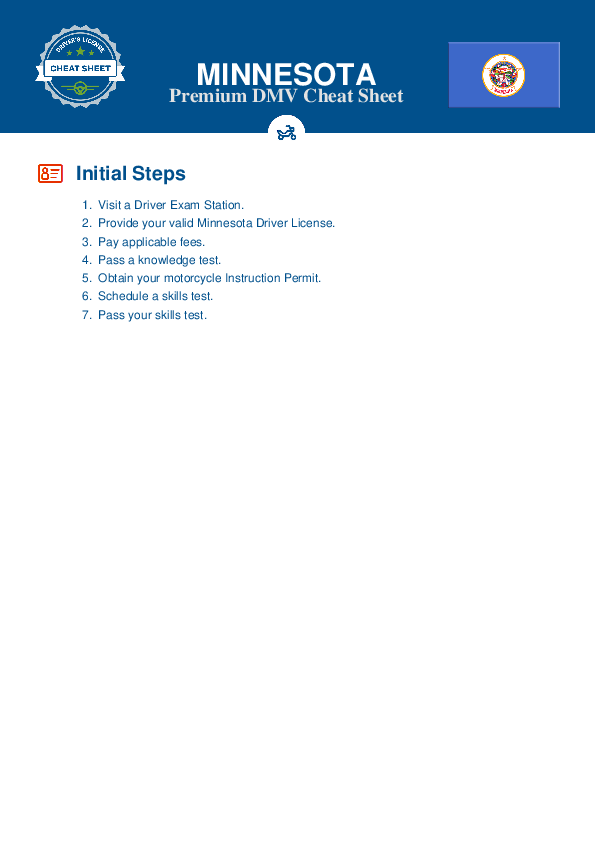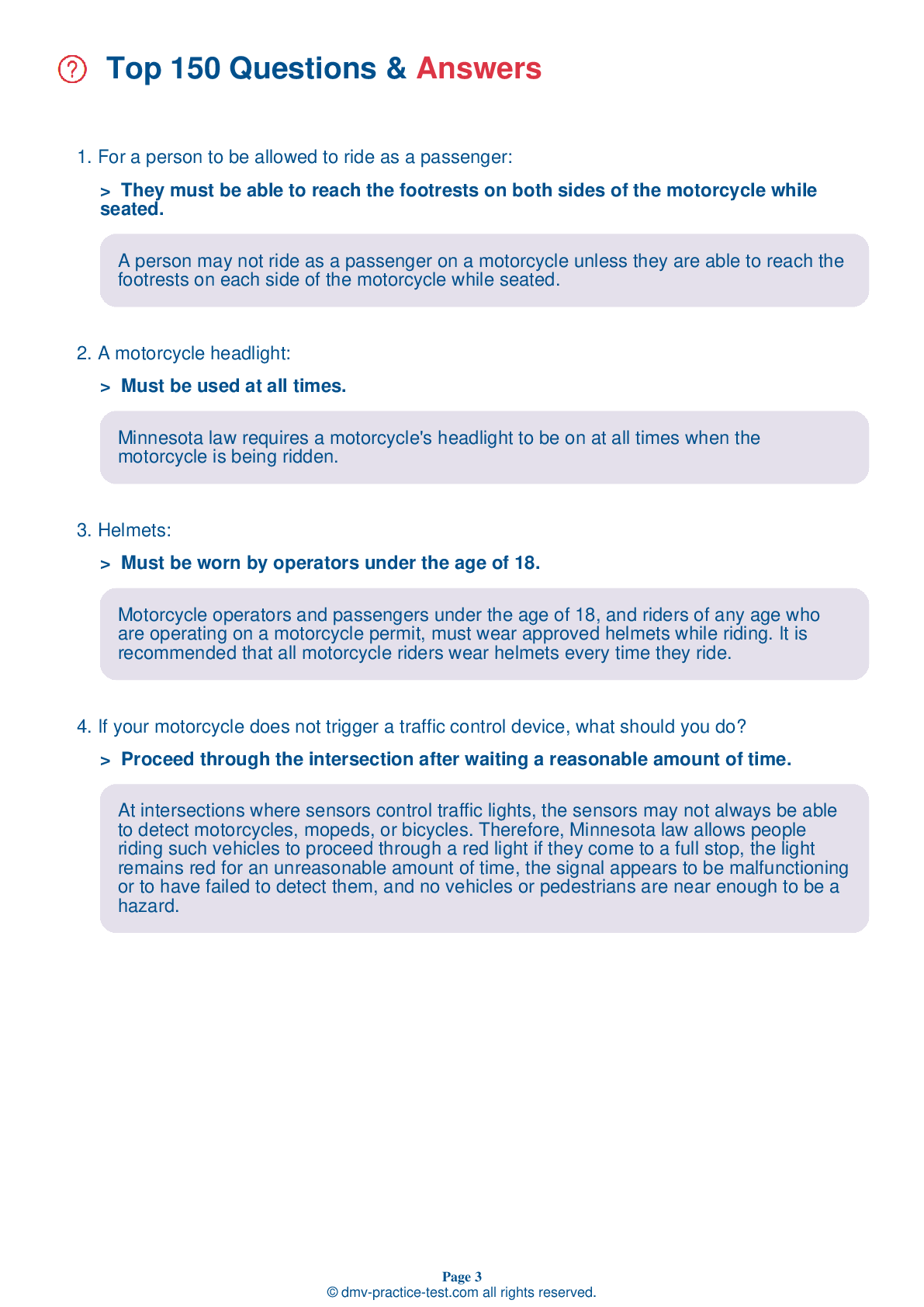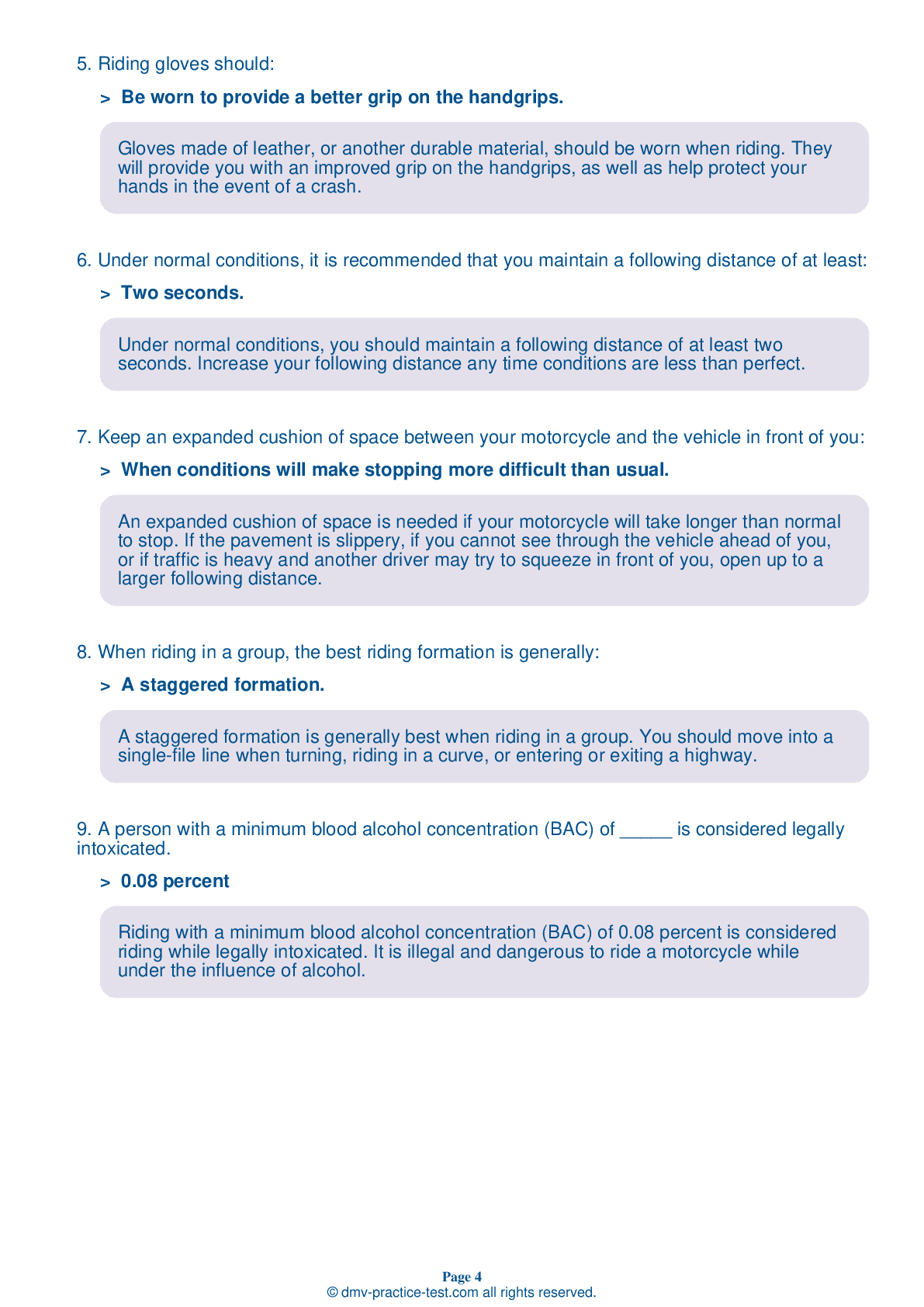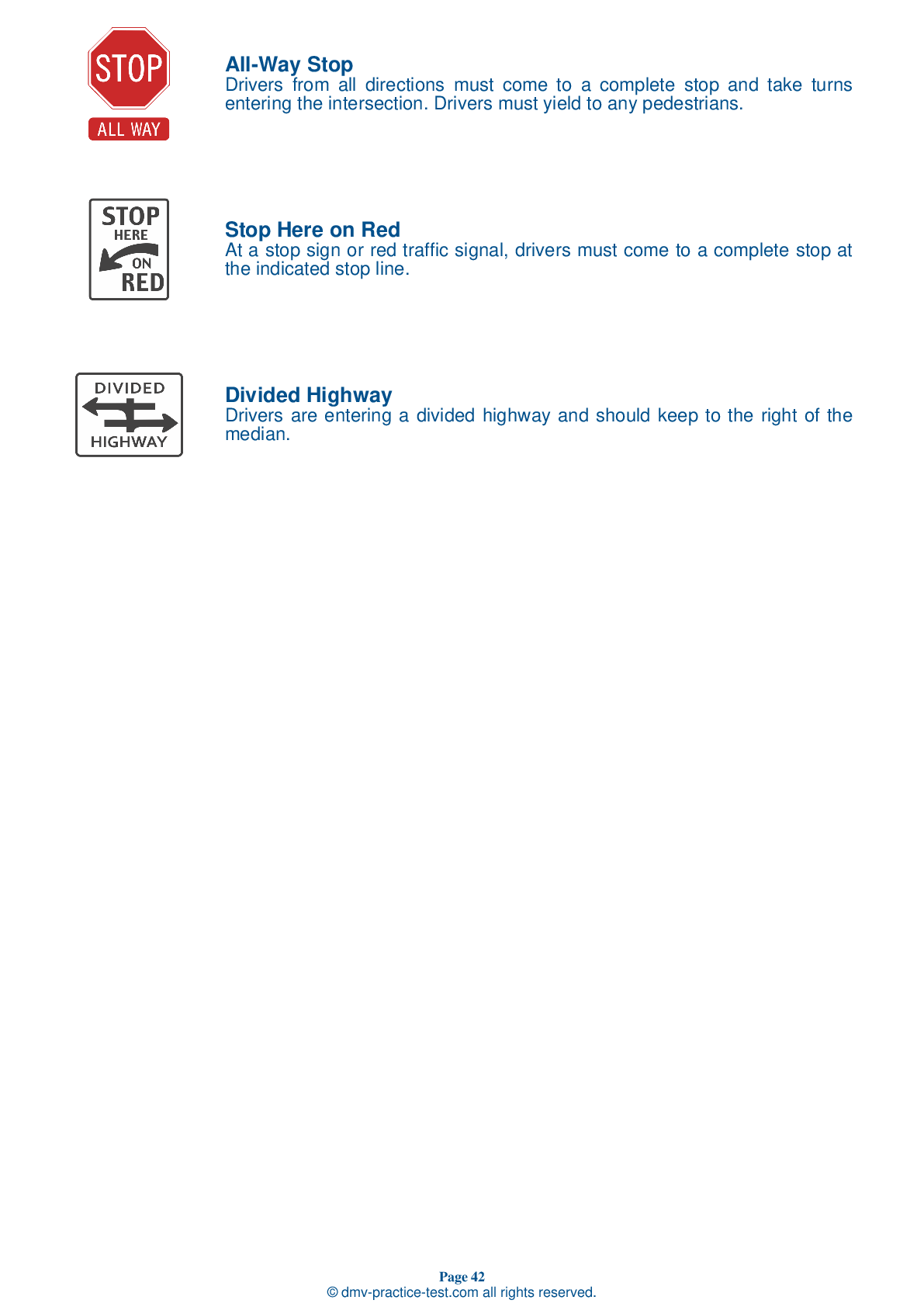Motorcycle Test | License MN 2025 | FREE Online Practice! #14
Take this FREE motorcycle test (license in MN 2025) to check your knowledge of the road rules. To improve your results, download a motorcycle handbook online, study theory, and practice for free on our website. Still worried about how to get a motorcycle license in Minnesota in 2025? Check our website for more sample tests, train as much as possible, and boost your grades!
1 . When riding through a curve, a group of motorcyclists should:
While a staggered formation is generally recommended, riders in a group should move into a single-file formation when taking curves, taking turns, entering a highway, or leaving a highway.
2 . A primary cause of single-vehicle motorcycle collisions is:
A primary cause of single-vehicle collisions is motorcyclists running too wide in a curve or turn. Taking a turn too wide can cause a motorcycle to leave the roadway or collide with an object.
3 . To swerve, you should:
To swerve, apply a small amount of pressure to the handgrip located on the side of your intended direction of escape. To swerve to the left, press the left handgrip, then press the right to recover. To swerve to the right, press the right handgrip, then the left.
4 . When being passed by another vehicle, motorcyclists should be alert to:
When being passed, motorcyclists should be careful not to be hit by any part of the passing vehicle, including its mirrors. In addition to the vehicle itself, motorcyclists should also be aware of wind gusts coming from the passing vehicle and potential objects being thrown by a passenger in the vehicle who may not be paying attention to the road.
5 . What are the four steps to safely completing a turn?
To safely complete a turn, a rider should slow, look, press, and roll. The rider should reduce their speed when approaching the turn and look through the turn to where they want to go. They should press the handle grip in the direction of the turn and roll on the throttle through the turn to stabilize suspension.
6 . If only one alcoholic drink is consumed:
As little as one alcoholic drink can significantly affect the skills that are needed for safe riding. The only way to remove the alcohol content of a drink from your body is to allow your body time to eliminate it.
7 . When you are riding on a bridge grating, you should:
Crossing rain grooves or bridge gratings may cause your motorcycle to move in a weaving motion. This is usually not dangerous, so simply relax and proceed across the surface at a steady speed. Trying to ride at an angle to compensate for the weave is dangerous because it forces you to zigzag to stay in your lane.
8 . When parking a three-wheeled motorcycle on the side of the road, it should be:
Because of the limitations on mobility and motorcycle length, it is not practical to park your three-wheeled motorcycle on the side of a road at an angle with your rear wheel touching the curb, as you would with a two-wheeled motorcycle. Position your motorcycle in a parking space so you are parked parallel to the curb and set the parking brake.
See the exact questions that will be on the 2025 Minnesota DMV exam.
99.2% of people who use the cheat sheet pass the FIRST TIME
Jeneen was tired of paying $5/gallon. She got herself a scooter that required the motorcycle license. She studyed the motorcycle test cheat sheet and passed her test the next day!
Christopher tells us how he knew nothing prior to obtaining the motorcycle study guide, and he only got one question wrong because he clicked on the wrong answer by mistake.



